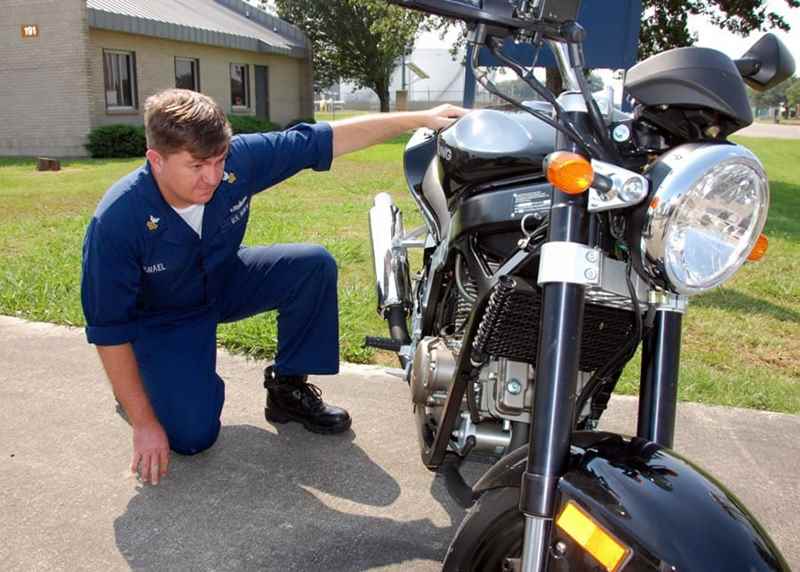Table of Contents
Introduction
Welcome to the world of two-wheeled transportation, where the thrill of the ride is matched by the intricacy of maintenance. Among the many aspects that keep a motorcycle in top shape, tire balancing plays a pivotal role. But not just any equipment can handle this task; tire balancers are specifically designed for the job. These devices ensure that tires are balanced to perfection, providing a smooth ride and preventing uneven wear.
Understanding the nuances between wheel balancers and their automotive counterparts is not just about splitting hairs. It’s crucial for safety, performance, and the longevity of your motorcycle. The differences may seem subtle to the untrained eye, but they have significant implications for the maintenance and handling of these powerful machines. Let’s delve into why this distinction is essential and how it impacts every aspect of your motorcycle’s journey.
When we talk about vehicle maintenance, the importance of properly balanced tires cannot be overstated. For motorcycles, with their unique dynamics and reliance on a precise balance for optimal performance, the right balancer isn’t just a recommendation—it’s a necessity. With this introduction, we set the stage for an in-depth exploration of what sets motorcycle wheel balancers apart and why they’re indispensable for riders seeking the perfect harmony on the road.
Key Characteristics of Motorcycle Tire Balancers
Motorcycle wheel balancers are the unsung heroes of a smooth ride. But what makes them so different from the ones meant for cars? Let’s delve into the specifics that set these tools apart and unpack why they’re indispensable for any two-wheeled enthusiast.
Specific Design Features
At first glance, you might think that all wheel balancers are created equal, but the devil is in the details. Motorcycle tire balancers are designed with a keen eye for the unique needs of a motorcycle wheel balancer. They often feature smaller, more precise adapters to accommodate the typically narrower axles of motorcycle wheels. Unlike automotive balancers, many motorcycle balancers are manual, requiring the user to spin the wheel by hand to determine the imbalance.
The compact design of whell balancers is not just a space-saving feature. It reflects the need for more accurate balancing due to the motorcycle’s sensitivity to vibrations. As such, these balancers often include fine-tuning capabilities that allow for adjustments down to the smallest weight increments—sometimes as minute as a fraction of an ounce. This precision ensures that even at high speeds, the rider experiences a stable and vibration-free journey.
Unique Requirements for Balancing Motorcycle Tires
Balancing a motorcycle tire is a whole different ball game compared to its four-wheeled friends. The tires on a motorcycle are expected to cope with a dynamic range of stresses—from high-speed cornering to varied road textures. As such, motorcycle tires demand a level of balance that is both more delicate and precise. This is because any imperfection in balance can significantly affect the handling and safety of the bike.
Moreover, motorcycle wheels are often lighter and require less weight to achieve wheel balancer and wheel balance. Due to the single-track nature of motorcycles, any imbalance is not just uncomfortable—it’s hazardous. Therefore, the balancers for these vehicles are designed to identify and correct imbalances with greater accuracy, which is vital for the well-being of the rider.
Impact of Size and Weight Distribution
The size and weight distribution of a motorcycle play a pivotal role in the balancing process. Motorcycles are inherently less stable than cars due to their two-wheel layout. This means that the weight distribution across the wheels is more central and top-heavy, making them more susceptible to balance-related issues.
A proper balance is critical to ensure that the weight is evenly distributed when the motorcycle is in motion. This isn’t just about comfort; it’s about performance and safety. Misbalanced tires can lead to steering wobbles, uneven tire wear, and ultimately, a higher risk of accidents. A dedicated wheel balancer takes these factors into account, providing features that cater specifically to the unique geometry and weight characteristics of motorcycle wheels.
In essence, the design of wheel balancers is a response to the nuanced requirements of two-wheeled vehicles. Their ability to provide precise corrections and accommodate the specific dimensions of motorcycle wheels is what sets them apart from the bulkier, one-size-fits-all approach of automotive balancers.
As we’ve seen, wheel balancers bear the hallmarks of specialized tools crafted for a specific purpose. From their finely tuned mechanisms to their tailored designs, they embody the necessary precision for keeping your ride smooth and safe. In the next sections, we’ll explore the tangible benefits of using these specialized balancers and provide practical advice for maintaining them.
Advantages of Using Motorcycle Wheel Balancers
What makes using specialized wheel balancers, wheel balancer or wheel balance a better choice over their automotive counterparts? This is the question we delve into as we explore the tangible benefits brought by these precision tools. Motorcycles, with their two-wheeled dynamics, require a level of precision in maintenance that four-wheeled vehicles do not. Here’s why choosing the right equipment for the job can make all the difference.
Optimized Performance and Stability
The first and foremost advantage of utilizing motorcycle-specific wheel balancers is the enhancement of the bike’s performance. A well-balanced tire equals a smoother ride, but for motorcycles, the impact is even more pronounced. When tires are perfectly balanced, they rotate without causing undue vibration, which translates to improved handling and stability—a critical aspect of motorcycle riding. This fine-tuning aids in ensuring that the rider feels connected to the road and can maneuver with confidence, whether cruising on a straightaway or navigating a tight curve.
Moreover, the balance of a motorcycle’s tires is paramount in preventing uneven tire wear. This not only extends the lifespan of the tires but also keeps the ride safe. Unevenly worn tires can lead to unpredictable handling characteristics, which on a motorcycle can be quite dangerous. Therefore, motorcycle wheel balancers serve as an essential tool in maintaining the optimal condition of your tires, and thus, your safety on the road.
Cost-Effectiveness and Savings
In addition to performance benefits, there’s also the matter of cost-effectiveness. While it might seem like an additional expense to invest in a motorcycle-specific wheel balancer, the long-term savings are significant. By regularly balancing your tires, you prevent premature tire wear, helping you to avoid the frequent purchases of new tires that unbalanced wheels would necessitate unlike wheel balancer motorcycle. Not only does this save you money, but it also saves you time and the inconvenience of unexpected maintenance.
Furthermore, when you have the right tools, you’re more likely to perform regular checks and balances yourself, reducing the need for professional services. DIY tire balancing, with the aid of a dedicated wheel balancer, becomes a straightforward and satisfying task rather than a chore, encouraging routine maintenance that pays off financially over time.
Enhanced Handling and Safety
The connection between tire balance and the handling of a motorcycle cannot be overstated. A motorcycle wheel balancer ensures that the weight is evenly distributed around the axle, and this balance is crucial for maintaining the bike’s agility and responsiveness. It allows for precise steering inputs and predictable behavior from the bike, which are indispensable for a safe riding experience. In high-speed scenarios, even a small imbalance can cause a wobble or shimmy that compromises the rider’s control—making the peace of mind that comes from well-balanced tires invaluable.
Additionally, balanced tires help to reduce strain on the motorcycle’s suspension components. Less vibration means less wear and tear on these critical parts, contributing to the longevity of the motorcycle as a whole and preventing costly repairs down the line.
Ultimately, the advantages of using tire balancers extend beyond just the mechanics of the bike; they play a pivotal role in the rider’s enjoyment and security. By using equipment specifically designed for motorcycles, riders ensure that their machine is performing at its best, providing a harmonious blend of efficiency, durability, and pleasure.
As we move forward, remember that the proper use of these tools is just as important as having them. In the next section, we’ll provide practical tips on how to use tire balancers effectively, so you can feel confident both in the garage and on the open road.
Practical Tips for Using Motorcycle Tire Balancers
Embarking on the journey of maintaining your motorcycle’s tires with precision, one cannot help but wonder about the steps involved in properly using a motorcycle tire balancer. It’s a crucial aspect to ensure that your rides are smooth and your bike performs at its best. So, let’s dive into the step-by-step process to achieve that perfect balance.
Step-by-Step Instructions
- Prepare Your Workspace: Ensure you have a clean, flat surface to work on. Gather all the necessary tools including the balancer, weights, and a torque wrench.
- Remove the Wheel: Safely lift your motorcycle and remove the wheel according to the manufacturer’s instructions.
- Mount the Wheel on the Balancer: Place the wheel on the balancer, making sure it’s securely fitted. The wheel should be free to rotate without any hindrance.
- Find the Heavy Spot: Rotate the wheel gently and allow it to come to a stop. The heaviest part will settle at the bottom. Mark this spot as your reference point.
- Attach Weights: Attach adhesive weights opposite the heavy spot. Re-spin the wheel to check if it remains stationary in any position. Adjust the weights as needed until balance is achieved.
- Final Check: Once balanced, give the wheel a few more spins to ensure it no longer has a tendency to stop at a particular point.
- Re-attach the Wheel: Carefully place the wheel back onto your motorcycle, making sure to torque the nuts to the specifications provided by your bike’s manufacturer. Now you have your wheel balancer on.
Moving on, let’s address some common pitfalls that could disrupt the balancing act. Being aware of these can save you from unnecessary hassle and potential safety risks.
Common Mistakes to Avoid
- Ignoring the Manufacturer’s Guidelines: Each motorcycle has specific requirements. Not following these can result in improper balancing and potential damage.
- Using Damaged Equipment: Always check the balancer for any signs of wear or damage before use. A faulty balancer can lead to inaccurate readings.
- Overlooking Wheel Cleanliness: Dirt and debris on the wheel can affect the balance. Clean the wheel thoroughly before placing it on the balancer.
- Incorrect Weight Placement: Weights must be placed precisely opposite the heavy spot. Even slight deviations can throw off the balance.
- Forgetting to Spin Check: Failing to do a final spin check could mean missing an imbalance, however small it may be.
Lastly, we must consider how to keep our trusty tire balancer in top condition over time. A well-maintained balancer is key to consistent performance.
Maintenance Tips for Your Balancer
- Regular Inspection: Before each use, inspect your balancer for any signs of wear or damage. Replace parts as necessary.
- Clean After Use: Wipe down the balancer after every use to keep it free of dirt and grease, which can cause inaccuracies.
- Store Properly: Keep your balancer in a dry, protected area to prevent rust and other damage from environmental exposure.
- Calibration Checks: Periodically check the calibration of your balancer. Consult the user manual for guidance on how to perform a calibration test.
- Handle with Care: Always move and handle the balancer gently to avoid jarring the delicate mechanisms inside.
Arming yourself with these tips not only ensures the longevity of your equipment but also guarantees your motorcycle’s tires are consistently balanced, giving you peace of mind and an exceptional riding experience. Now that you’re equipped with this knowledge, you’re ready to take wheel maintenance into your own hands and hence wheel balancer are important!
Conclusion and Call to Action
As we’ve navigated through the complexities and specifics of motorcycle tire balancers, it’s become clear that these tools are not just another garage accessory but a fundamental component for the avid biker. Reflecting on the key distinctions between motorcycle tire balancers and those designed for automobiles, one can appreciate the intricacies involved in crafting equipment that meets the particular needs of two-wheeled vehicles.
Motorcycle tire balancers are tailored to accommodate the unique size, weight distribution, and requirements of motorcycle tires. Unlike their automotive counterparts, these balancers are sensitive to the smaller dimensions and lighter weight of motorcycle wheels, necessitating precision that generic balancers simply cannot provide. This dedication to specificity ensures that your motorcycle maintains optimal handling and stability, translating into a safe and exhilarating riding experience.
The investment in the right tools is not merely a matter of performance; it is also a commitment to safety and longevity. By opting for a specialized motorcycle tire balancer, riders safeguard their investment in their bikes. The benefits are manifold—enhanced performance, reduced tire wear, and ultimately, savings that far outweigh the initial cost of purchasing the correct equipment.
Before we part ways, I encourage you, the reader, to delve deeper into this subject. The journey doesn’t end here. Seek out further resources that shed light on the finer points of tire balancing. Connect with professionals who can offer guidance and demonstrate the subtleties of using a motorcycle tire balancer with expertise. Remember, knowledge is the rider’s best tool, and your bike deserves nothing less than the utmost care.
As we conclude, take a moment to reflect on the importance of precision in maintaining your motorcycle’s tires. Embrace the nuances that set motorcycle tire balancers apart, and recognize the value they bring to your riding experience. Equip yourself with the right tools, and ride with confidence, knowing that every turn and every mile is underpinned by the balance and harmony of well-maintained tires. Safe travels, and may your rides be as balanced as the wheels beneath you.
















